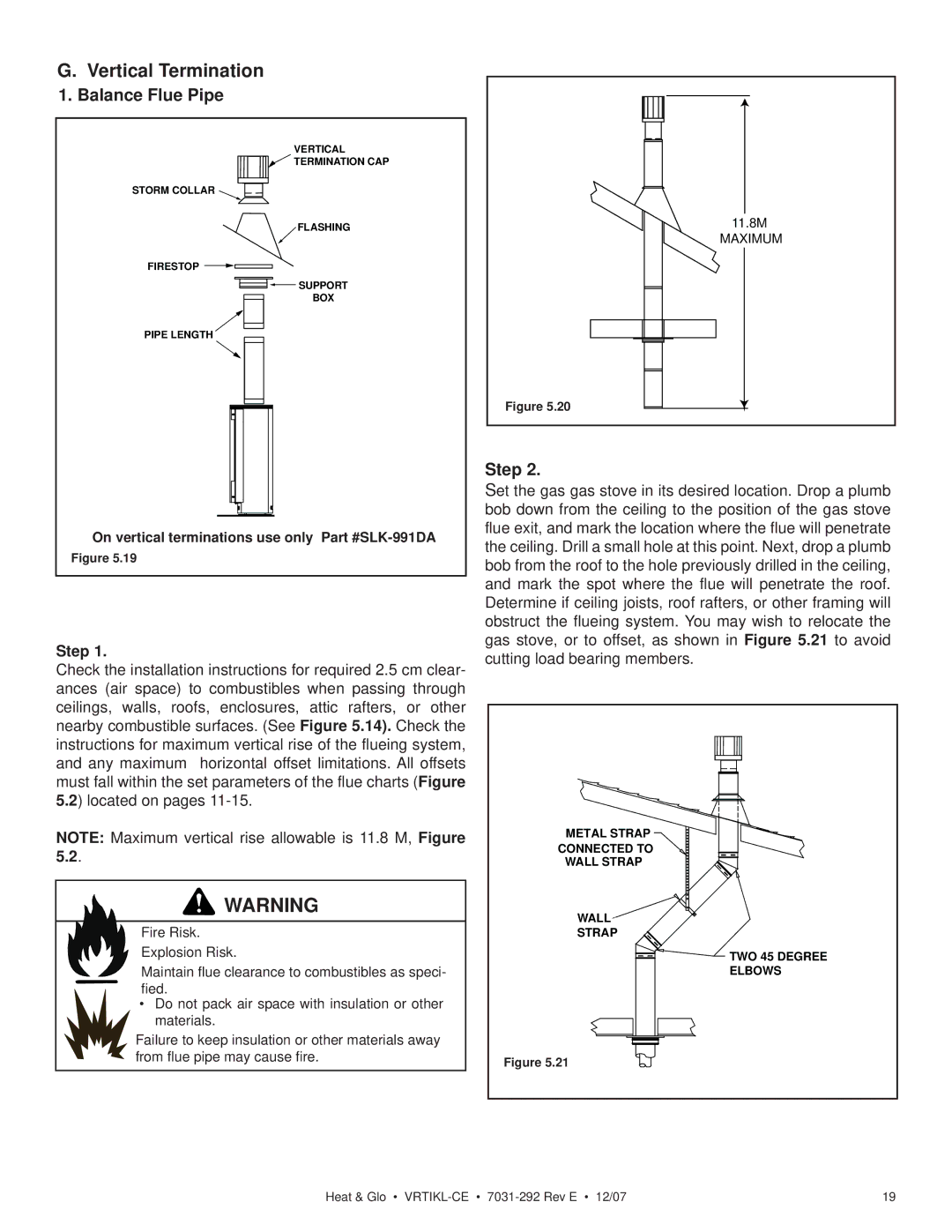
G.Vertical Termination
1. Balance Flue Pipe
VERTICAL
TERMINATION CAP
STORM COLLAR
FLASHING
FIRESTOP ![]()
![]() SUPPORT
SUPPORT
BOX
PIPE LENGTH
On vertical terminations use only Part
Figure 5.19
Step 1.
Check the installation instructions for required 2.5 cm clear- ances (air space) to combustibles when passing through ceilings, walls, roofs, enclosures, attic rafters, or other nearby combustible surfaces. (See Figure 5.14). Check the instructions for maximum vertical rise of the flueing system, and any maximum horizontal offset limitations. All offsets must fall within the set parameters of the flue charts (Figure 5.2) located on pages
NOTE: Maximum vertical rise allowable is 11.8 M, Figure 5.2.
WARNING
Fire Risk. Explosion Risk.
Maintain flue clearance to combustibles as speci- fied.
•Do not pack air space with insulation or other materials.
Failure to keep insulation or other materials away from flue pipe may cause fire.
11.8M MAXIMUM
Figure 5.20
Step 2.
Set the gas gas stove in its desired location. Drop a plumb bob down from the ceiling to the position of the gas stove flue exit, and mark the location where the flue will penetrate the ceiling. Drill a small hole at this point. Next, drop a plumb bob from the roof to the hole previously drilled in the ceiling, and mark the spot where the flue will penetrate the roof. Determine if ceiling joists, roof rafters, or other framing will obstruct the flueing system. You may wish to relocate the gas stove, or to offset, as shown in Figure 5.21 to avoid cutting load bearing members.
METAL STRAP
CONNECTED TO
WALL STRAP
WALL
STRAP
TWO 45 DEGREE
ELBOWS
Figure 5.21
Heat & Glo • | 19 |
